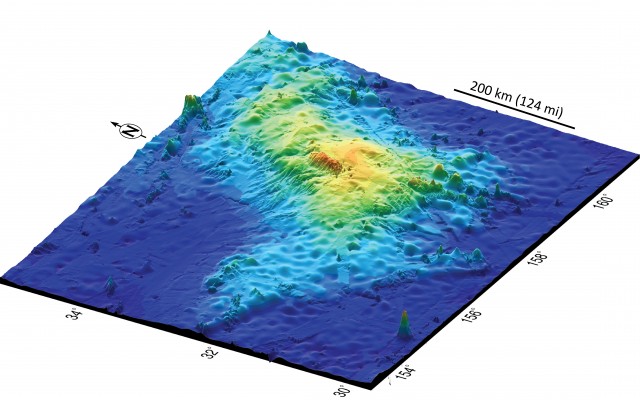Mars’ Olympus Mons may have company in biggest volcanoes club—on Earth
Ars Technica » Scientific Method 2013-09-06

Olympus Mons, Mars’ massive shield volcano that rises over 20 kilometers into the air and covers an area the size of Arizona, is one of the most impressive geological features in the solar system. It’s difficult to imagine such a gargantuan volcano on the surface of the Earth. But maybe that’s only because we haven’t looked hard enough.
The Shatsky Rise is a seafloor plateau in the Pacific, about 900 miles off the coast of Japan. In total, it’s about the size of California (sticking with US states as units of measure). Like other oceanic plateaus, it was built by huge outpourings of lava. They’re thought to be similar to continental “flood basalts” like the Columbia River Basalts and India’s Deccan Traps that are associated with mantle hot spots. Prodigious amounts of lava issued forth from long fissures and smaller vents during those events. There are still things we don’t know about these kinds of eruptions, so you can imagine how much less we know about the plateaus at the bottom of the ocean.
William Sager, a Professor of Geophysics at the University of Houston, is one of the researchers who has been studying the Shatsky Rise. The plateau is made of several separate chunks called “massifs” that formed about 145 million years ago, the largest of which is Tamu Massif. “I have suspected for years that Tamu might be a single volcano,” Sager told Ars. “We have known the shape for many years, and it appears to be a big dome. But when I would make this assertion, other scientists would say that I should not be so quick to jump to that conclusion because continental flood basalts have complex eruption sources, often along long fissures. They were right in the sense that the shape alone is not proof.”
Read 8 remaining paragraphs | Comments




